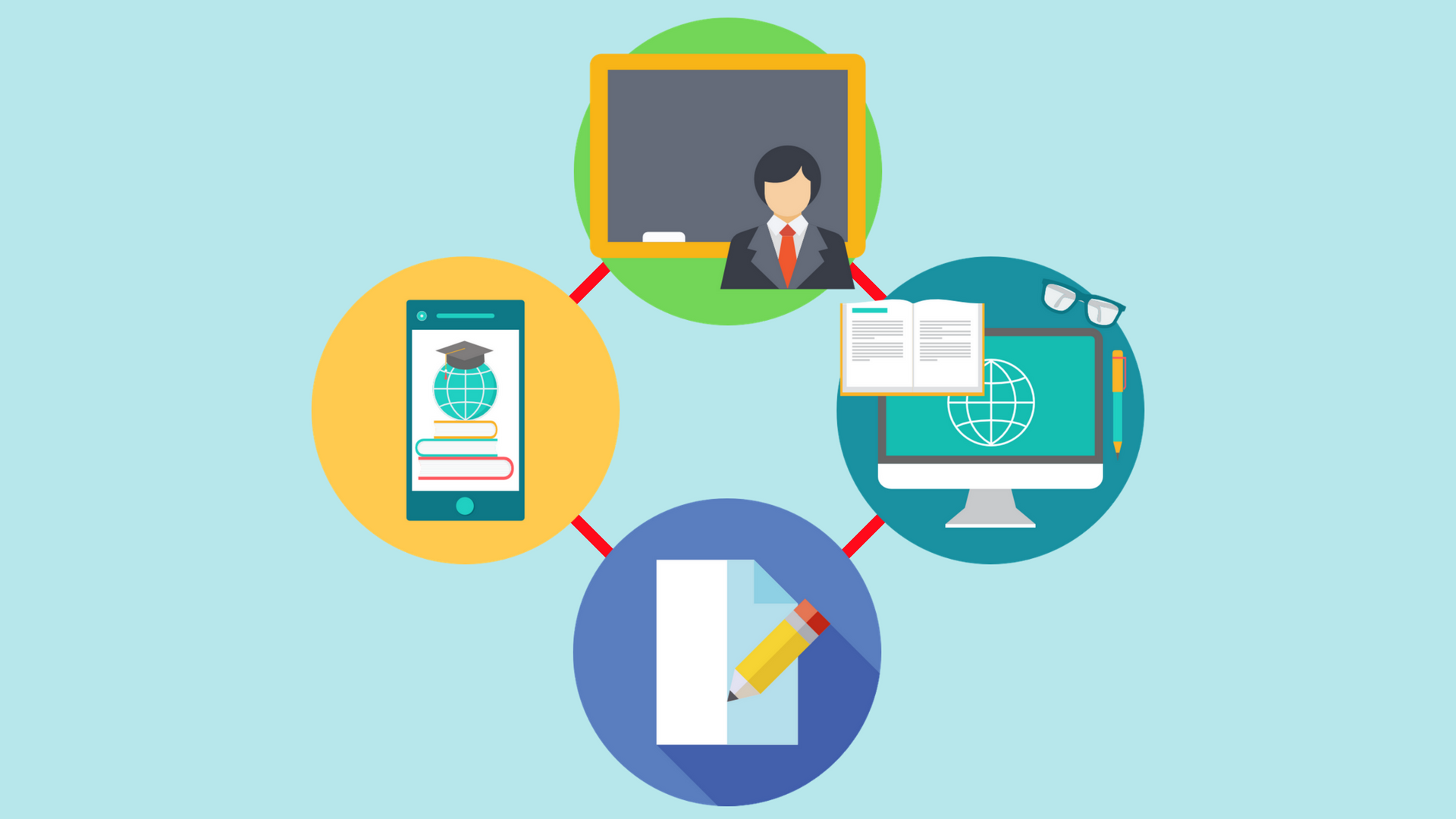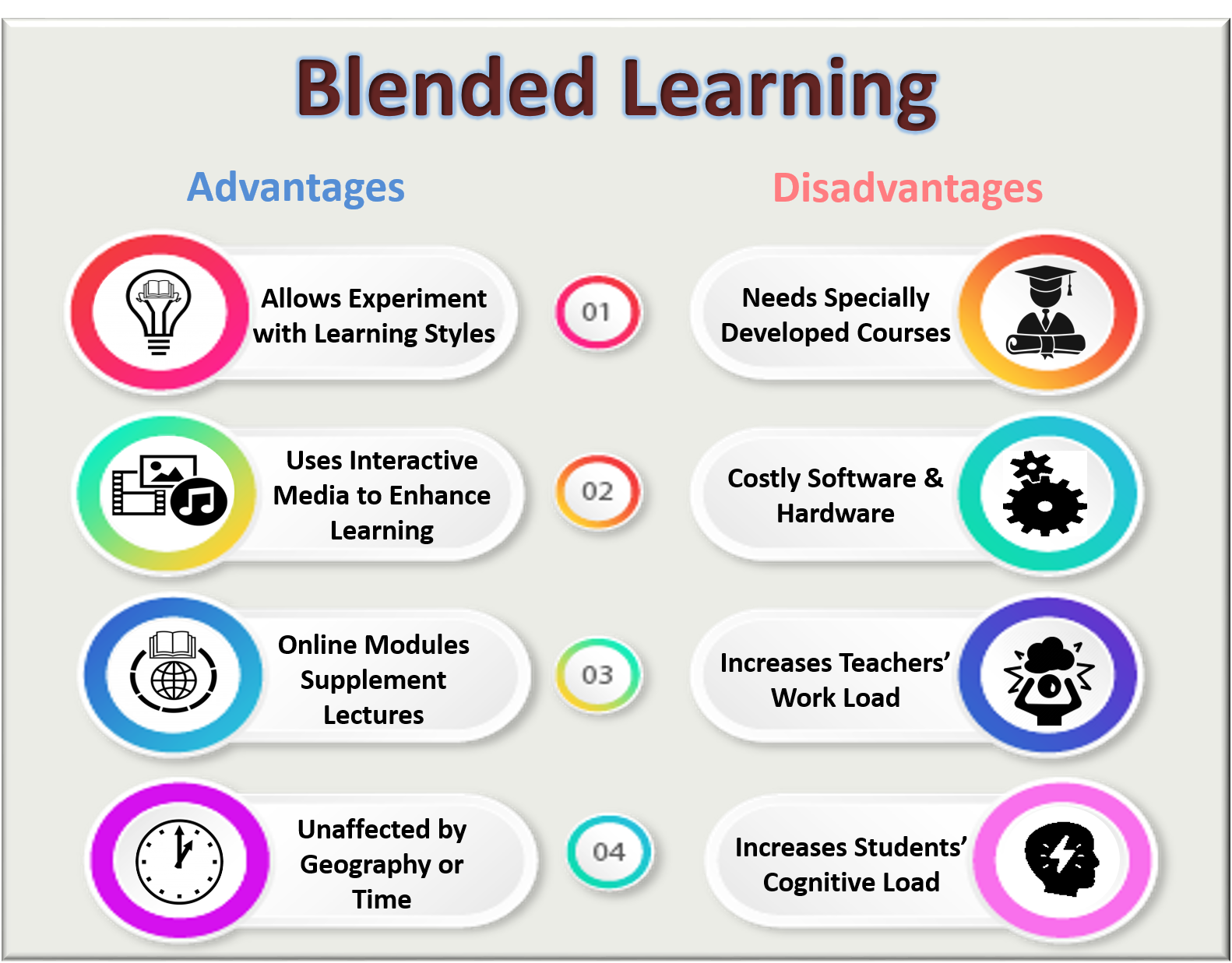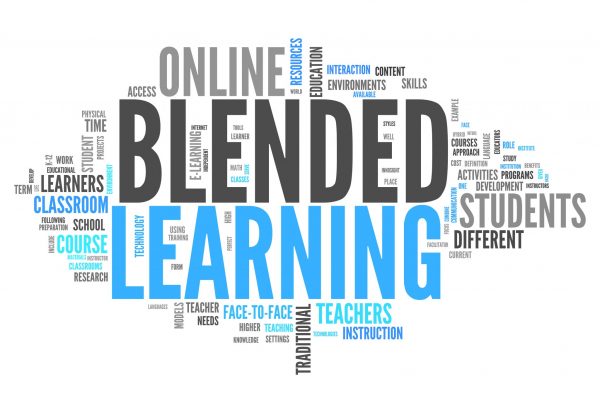Blended Learning is a teaching technique that amalgamates the effective teaching methodologies of traditional learning and eLearning. It brings endless possibilities to the table for every individual with the help of technology. It has been proven to be effective in yielding better results and efficient fulfillment of learning objectives. This article delves deeper into the concept of blended learning as a prospective approach to teaching and learning.
(Refer to our blog on Online Learning vs Traditional Learning: An Introduction for more information on traditional learning.)
What Is Blended Learning?

Blended Learning, as the name suggests, is an integrated form of learning in which traditional classroom learning is clubbed with eLearning to enhance learners’ experience and to engage them better. In other words, it brings technology-based learning into the brick-mortar classroom setting, where learning occurs under the supervision of an expert teacher. It is also known as Hybrid Learning.
Technology has become an inseparable part of life. Hybrid learning makes use of this technology to supplement and eventually transform the learning process. Moreover, the use of technology renders an improved learning process, promoting better learning and retention. Also, the rise of digital learning and mobile learning acts as a contributing factor in blended learning.
Taking an online course while simultaneously attending classes for the same is an instance of the blended learning process. Similarly, a student participating in a classroom discussion and preparing it in the form of a video as a home assignment is another example of hybrid learning.
Blended Learning Models
eLearning has gained a broader perspective with time. It is the culmination of various learning practices that aim to achieve different learning objectives. Blended learning is one such form. However, blended learning is an independent form of eLearning. It is categorized into various types depending upon the content, scale, technology used, and other relevant factors.
1. Station Rotation Learning
The Station Rotation Learning model allows students to rotate through stations that are a blend of traditional and online learning. The rotation occurs based on a fixed schedule. This model particularly applies to elementary schools.
2. Lab Rotation Learning
The Lab Rotation model and the Station Rotation model are alike. This model uses computer labs in schools on a rotation basis as per a fixed schedule. This model works by considering both the learning needs and the resources available.
3. Individual Rotation Learning
This is another type of rotation model where students rotate through stations at regular intervals following a schedule. But unlike other rotation models, the Individual Rotation model allows students to rotate through stations according to an individual schedule of the software algorithm or the teacher.
4. The Flipped Classroom
In a Flipped Classroom, the traditional roles of the school and home are flipped. The concept of learning occurs at home and the students practice it in the school in a supportive environment with peers and teachers.
5. Enriched Virtual Blended Learning
Enriched Virtual Blended Learning provides an enriched virtual learning experience where the students focus more on online coursework rather than attending lectures. The scheduling of lectures is occasional and depends on learners’ requirements.
6. Self-Directed Learning
The Self-Directed Learning model is a personalized learning model where the students direct their learning by switching between face-to-face learning and online learning simultaneously as per the demand of the course. Thus, the role of the teacher and online courses keep changing as per the learners’ requirements.
7. Project-Based Learning
In the Project-Based Learning model, the students make use of classroom learning as well as online learning while collaborating to design, iterate, and publish project-based learning assignments, products, and others. This type of learning is supported by various online resources that the students can use to create projects.
8. Supplemental Learning
The Supplemental Learning model provides a supplementing learning experience to the learners. The lessons achieve critical learning objectives in one place, while another platform acts as a supplement to the learning. For instance, students either attend a face-to-face learning class while online learning works as a supplement to it or vice-versa.
Advantages and Disadvantages
Effectiveness of Blended Learning
Blended learning is a method that engages learners by building their interests as they participate in traditional as well as online learning. Learners get a wider field of action that promotes learning and application of the knowledge gained. As a result, learners get a chance to experiment with different learning styles and produce better test scores.
Moreover, learners form stronger mental connections as they participate in two types of learning, that is, independent learning and mentored learning. Learning through a blend of traditional and online learning helps learners associate concepts with real-life situations. It also allows them to experience what they have learned, ultimately increasing the retention rate. Therefore, different pedagogical researchers have concluded that blended learning is an effective method of learning.
Read our next blog to find out about the strategies and best practices in Blended Learning.
Articles used for research: Teachthought and Lambda Solutions
Images from Shutterstock
Visit Evelyn Learning blog for more information on Blended Learning.
Create. Engage. Inspire















